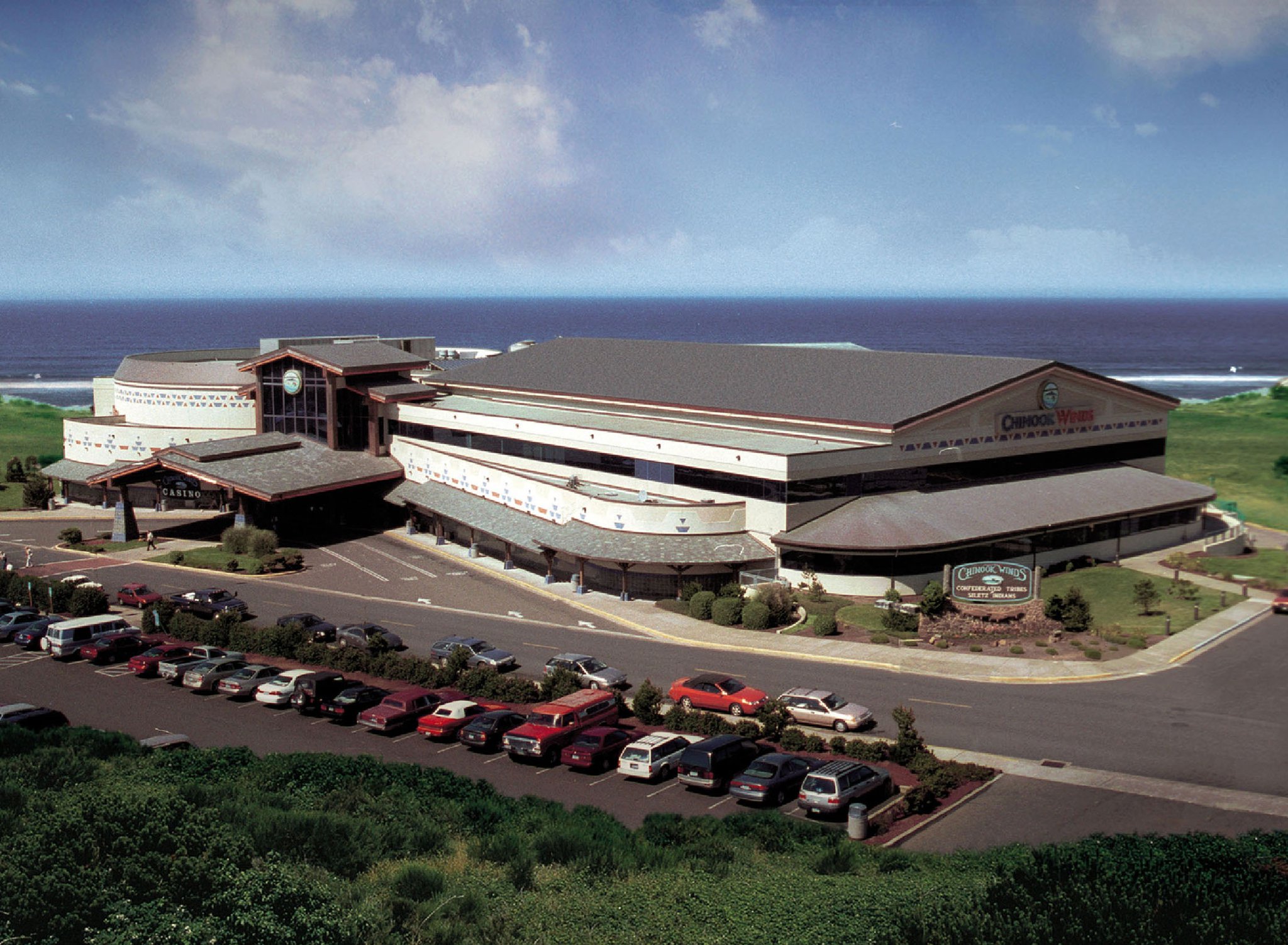
The Chinook Winds Casino, owned by the Confederate Tribes of Siletz Indians in Oregon. Photo from Facebook
Tribes that share gaming revenues on a per capita basis aren't improving the economic standing of their people, according to a new study:
On a rainy weekday afternoon, Mike Justice pushes his two-year-old son in a pram up a hill on the Siletz Reservation, a desolate, wooded area along the coast of Oregon. Although there are jobs at the nearby casino, Mr Justice, a member of the nearly 5,000-strong Siletz tribe, is unemployed. He and his girlfriend Jamie, a recovering drug addict, live off her welfare payments of a few hundred dollars a month, plus the roughly $1,200 he receives annually in “per capita payments”, cash the tribe distributes each year from its casino profits. That puts the family of three below the poverty line. t is not ideal, Mr Justice admits, but he says it is better than pouring hours into a casino job that pays minimum wage and barely covers the cost of commuting. Some 13% of Mr Justice’s tribe work at the Chinook Winds Casino, including his mother, but it does not appeal to him. The casino lies an hour away down a long, windy road. He has no car, and the shuttle bus runs only a few times a day. “Once you get off your shift, you may have to wait three hours for the shuttle, and then spend another hour on the road,” he says. “For me, it’s just not worth it.” Mr Justice’s situation is not unusual. After the Supreme Court ruled in 1987 that Native American tribes, being sovereign, could not be barred from allowing gambling, casinos began popping up on reservations everywhere. Today, almost half of America’s 566 Native American tribes and villages operate casinos, which in 2013 took in $28 billion, according to the National Indian Gaming Commission. Small tribes with land close to big cities have done well. Yet a new study in the American Indian Law Journal suggests that growing tribal gaming revenues can make poverty worse. The study looks at two dozen tribes in the Pacific north-west between 2000 and 2010. During that time, casinos owned by those tribes doubled their total annual take in real terms, to $2.7 billion. Yet the tribes’ mean poverty rate rose from 25% to 29%. Some tribes did worse: among the Siletz poverty jumped from 21.1% to 37.8%.Get the Story:
Of slots and sloth (The Economist 1/15) American Indian Law Journal Article:
Greg Guedel: Sovereignty, Economic Development, and Human Security in Native American Nations (Fall 2014)
Join the Conversation
